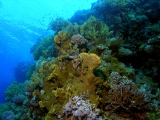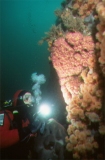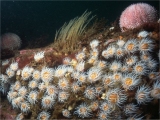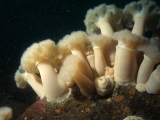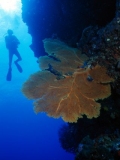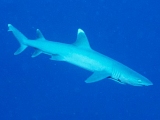|
|
Thursday, January 31, 2013
SCUBA News - #152 - January 2013
Tuesday, January 29, 2013
Scuba diving in Galapagos Live Aboards based island Diving-diving for all skill levels
Monday, January 28, 2013
Your Exclusive Money-Saving Offer from Scuba Diving
| View this email online |
 | |||
 | |||
Special email offer! Subscribe to Scuba Diving now and discover the reliable information, expert training and safety tips, and money-saving tools you need for the ultimate dive experience. Plus, every issue features amazing photography and tips for taking your own underwater photos and video. Subscribe now and get 1 year (6 issues) for only $14.97. Act now!! Offer ends in 5 days! |  | ||
 | |||
 |
|
Saturday, January 26, 2013
Scuba diving in the red sea
Think of scuba diving and images of James Bond wearing fins and sneaking up on the villain come to mind. Or, maybe your first thought is of Jacques Cousteau investigating the creatures of a coral reef. Both scenarios have entered popular culture for good reason - both reflect the adventure and wonder that characterize scuba diving. Over the last ten years awareness in scuba diving has grown in leaps and bounds, red sea diving is becoming the Mecca for many European travellers.Though many regard Jules Verne's description of underwater diving as pure science fiction, equipment-assisted diving had been around for more than 100 years earlier. But it wasn't until the WWII years when Emile Gagnan, with some help from a then-obscure French navel lieutenant - Jacques Cousteau - invented the first scuba gear, the Aqualung.
Tuesday, January 22, 2013
Men's dive watches how to compare
There are tons of men's watches in the market, but those who are deserving of you your hard earned money? And what exactly is a diver's watch anyway?A diver's watch is simply a wristwatch designed for diving. The key roles are to measure the time you spend underwater and to guide you safely at sea level with the help of decompression tables (if an analog clock). Also many diving watches look terrible and can be worn as a fashion accessory when not worn as a critical tool.A clock built for diving must be able to withstand water pressure of at least 100 m and tough enough to hold up to corrosive environments. Must be strong enough to shake off a knock or two too. A true diver's watch will have to meet a series of measures defined in ISO 6425, a worldwide standard that grants permission to print the words DIVER s watch conforming case maker.The characteristics of a WatchDiving Dive Watches have a nominal level of functionality that must be met to comply with the ISO standard and many watchmakers offer superior to this. Conventional analog watches were, but the emergence of diver's watches computer has seen a variety of underwater digital clock find more prominence.So exactly how does a dive Watch differ from a standard sports watch? There are a number of criteria that can be compared: divers ' watches water resistance corrosion & CaseBecause dive watches require some level of resistance to corrosion and water pressure, happens to be constructed from materials such as titanium, ceramic, plastic or stainless steel and synthetic resins. Diving watches can also tolerate a moderate level of magnetic perturbation extrinsic and shock. Integrated movement of most prestigious dive watches are shock protection smart.Rotating bezel (elapsed time Controller), keeping track of cumulative time of immersion is a vital function of a diver's watch. Analog watches feature a rotating bezel that addresses this. The purpose of the bezel is to allow easy adjustment of total dive time. The bezel is twisted to align the zero on the bezel with one of the clock's hands, saving the diver need to remember the position of the starting hand and to perform mental arithmetic to derive the total dive time. The bezel is unidirectional and can only be shifted counterclockwise to increase the apparent elapsed time (do not reduce it). Some models also have a dive bezel with lock, which reduces the risk of accidental alteration under water. Diver's watches digital, of course only show the length of the dive in numeric format.Crystal CaseDue for high strength a watch is subjected to underwater due to pressure, diving watches tend to a Crystal case-ultra thick sport. Some standard materials used include synthetic sapphire glass, acrylic and tempered glass. Each have their own pros and consumption of acrylic glass is resistant to shattering, but scratch easliyHardened zero is more tolerant than the acrylic glass but less brittle than Sapphire.Sapphire is very tolerant to scratches, but will break more easily than tempered glass and acrylic glass.Many watchmakers use combinations of these standard materials.CrownVirtually all analog watches feature a screw, Crown water tolerant. The Crown must normally be unscrewed to set or adjust the time or date and screwed to restore water resistance.Helium exhaust ValveMost dive watches are created for diving "shallow", not the deepest of 200 metres below sea level. Others are designed to run thousands of feet beneath the waves. Diving in these depths is known as saturation diving "or" immersion technique ". A problem in saturation diving ultra-deep that run in environmental chambers, helium is the accumulation of Helium-induced pressure infiltrate the watch case. Often as a diver returned to the surface the Crystal Dial cover would be shot due to the accumulation of excess helium ... Saturation divers watch manufacturers compensated for this by installing release valve to vent excess gas.Strap/BraceletThe majority of watches have a polyurethane rubber strap or silicone or a metal bracelet with excess length to allow you to wear the watch on the sleeve of a wetsuit. straps are often a deployment buckle concealed extension to extend the total length of the band.ReadabilityDive watches must be readable in low light conditions experienced deep beneath the ocean's surface. ISO 6425 requires that a diver's watch must feature operation indicator that can be viewed even in complete darkness. Most diving watches have high contrast, non-cluttered dials with numbers clearly marked, minute markers and hands that are sewn with a light coat of paint.Power Reserve IndicatorIf a dive watch uses a battery, ISO 6425 requires showing an indicator of the end of life (EOL) to warn of an energy-efficient power supply. This happens commonly with two or four second jump to second hand or a warning message on a digital clock.While a decent dive watch may seem expensive, it is important to note that this type of watch has been subjected to a series of stringent tests compared with a standard sports watch. Diving watches are designed to take a beating and a good lasting close to a life. Of course if you're a hard-core diver, I really can't live without one.
Friday, January 18, 2013
scuba diving course
Sfuggire a un mondo diverso. Un corso di immersioni subacquee vi porta in un mondo diverso con nuovi colori, forme, consistenze e creature. Prendere parte a un corso di immersioni subacquee e la fuga in un posto tranquillo per rinnovare la vostra energia ed eccitare i tuoi sensi. Esplorare nuovi posti. Le immersioni si libera per esplorare il mondo subacqueo - da storici relitti e barriere coralline vergini ai misteri della tua cava locale. Prenota un corso di immersioni subacquee ed esplorare che cosa sei stato mancante.Sperimentare una connessione con la natura; una sensazione di libertà e una trasformazione. Immersioni si collega con la natura. Si immerge in esperienze e sensazioni nuove. Trasforma la tua percezione della vita per sempre. Imparare a fare immersioni e trasformazione yourselfYou hai sempre voluto prendere l'immersione subacquea, gli amici sono sempre parlando e il tuo migliore compagno mantiene entusiasti suo incredibile viaggio di immersione per il Mar Rosso. Ma, come si fa a iniziare questa avventura? Chi è là fuori a battezzare si in questo sport? Attivo Diving offrono una gamma di lezioni per iniziare il tuo corso di immersioni subacquee.L'abilità di essere in grado di immergersi, sopravvivere ed effettivamente godere l'esperienza subacquea può essere una curva di apprendimento permanente, prendendo parte ad un corso di immersioni subacquee, si sarà in grado di imparare le basi di questo sport mentre in mani sicure di un istruttore qualificato. All'inizio del processo è un'esperienza incredibilmente gratificante dalla tua prima immersione.Per consentire un assaggio di questo sport, agenzie di subacquea hanno progettato la prova di immersione, Dive Resort o Discover Scuba Dive. Questi corsi sono solitamente sopra uno o due giorni e ti insegnano alcune immersioni competenze necessarie per introdurre in modo sicuro al mondo subacqueo. Durante questi primi giorni di immersioni saranno conservati ad una profondità limitata. La tua prima avventura sotto la superficie come parte del vostro corso di immersioni subacquee è uno che non dimenticherete mai. Il tuo corpo sommerge come un sottomarino in missione; le bolle di aria e acqua disorientare voi come l'intensità della luce diminuisce. Tutto quello che si sente è "respiro, rallenta, rilassarsi". Vieni presto a rendersi conto che queste non sono cose facili da raggiungere. C'è così tanto a guardare! Sarete stupiti a quanto il ronzio di spotting il primo Murena sporgere la testa di serpente-come aguzza fuori una fessura di roccia rimarrà un ricordo del tempo di vita.Per godere le vostre esperienze di corso di immersioni subacquee e assicurarsi che voi rimanere al sicuro, si consiglia di che completare il corso di immersioni subacquee con una scuola di immersioni certificata. Questi corsi sono progettati per insegnare a sopravvivere mentre respirare sott'acqua, capire e sapere come usare il tuo materiale di immersione e proteggere e rispettare l'ambiente marino. Il generale ordine gerarchico di formazione dive ottiene andando con il corso di 3-4 giorni Open water; Specialità, Advanced Diver, Rescue Diver, Dive Master, assistente istruttore, istruttore di immersioni e corsi Master Scuba Trainer seguono questo. Formazione di immersione è organizzata da un certo numero di agenzie di certificazione internazionale, il più popolare è PADI (Professional Association of Diving Instructors), BSAC (British Sub Aqua Club) e SSI (Scuba Schools International).Questi corsi di immersione non solo forniscono le competenze necessarie per sopravvivere sott'acqua, ma vi sono anche premiato con una certificazione o C-Card. La C-card è importante prova della vostra qualifica e rinomati centri immersioni sarà necessario questo vista prima di firmare sulla loro immersioni. Per saperne di più su come può imparare a scuba dive attraverso il Mar Rosso, visitare Lanzarote e Sud Africa http://www.activediving.co.uk e preventivo: ARTAuthor: Dean Thomas (15/08/08) che è tutto per ora su come può imparare a fare immersioni

